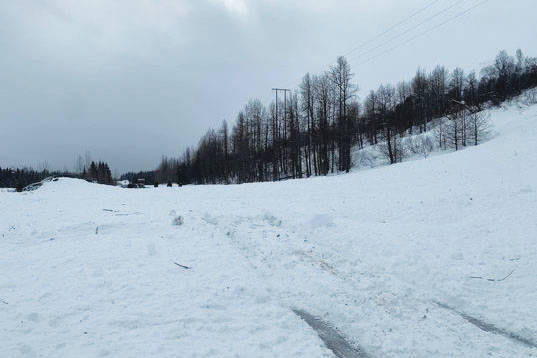Warmer temperatures and fluctuating weather patterns can make springtime a particularly hazardous time for avalanches, Wendy Wagner, director of the Chugach National Forest Avalanche Center in Girdwood, said Wednesday.
Wagner and her team release an avalanche forecast daily. She said avalanches are a bit like standing directly under a snow-laden roof on a warm day — the heat can cause the snow to slip down at a fast rate.
“It could be interesting especially if we get some warm storms on the peninsula,” Wagner said.
Last month, an avalanche estimated to be about 200 feet wide and 4-6 feet deep cut off travel to and from the Kenai Peninsula via the Seward Highway for several hours.
The center measures avalanches by destructive force relative to people and property. Different levels include if the avalanche is powerful enough to bury a human, take out a train, or uproot trees and change the terrain completely.
On Wednesday, the center reported heightened avalanche conditions on certain terrain areas of Turnagain Pass.
Wagner said stormy spring days increase avalanche likelihood, as well as hot and sunny afternoons and evenings.
“Those days are almost more concerning because more people are out,” she said.
Drivers and backcountry hikers should exercise caution this time of year.
Wagner said if drivers see an avalanche powder cloud from the distance, it is important to maneuver the vehicle out of the way of the snowfall immediately.
In order to be safe in the backcountry, it is crucial for people to recognize unstable snow and avalanche terrain. A 30-degree slope or steeper is an indication of the potential for an avalanche.
If a person finds themselves in the middle of an active avalanche, using swimming motions to fight out of the debris is the best way to emerge safely, Wagner said.
Wagner also emphasized the importance of being prepared before going into the backcountry.
Hikers and skiers who are equipped with an avalanche beacon, a shovel and a probe could help save a life. “Partners can effect a rescue,” Wagner said, if someone is dug out of an avalanche in 15 minutes or less.
Educational avalanche resources can be found on the Chugach National Forest Avalanche Center website.
Reach reporter Camille Botello at camille.botello@peninsulaclarion.com.

